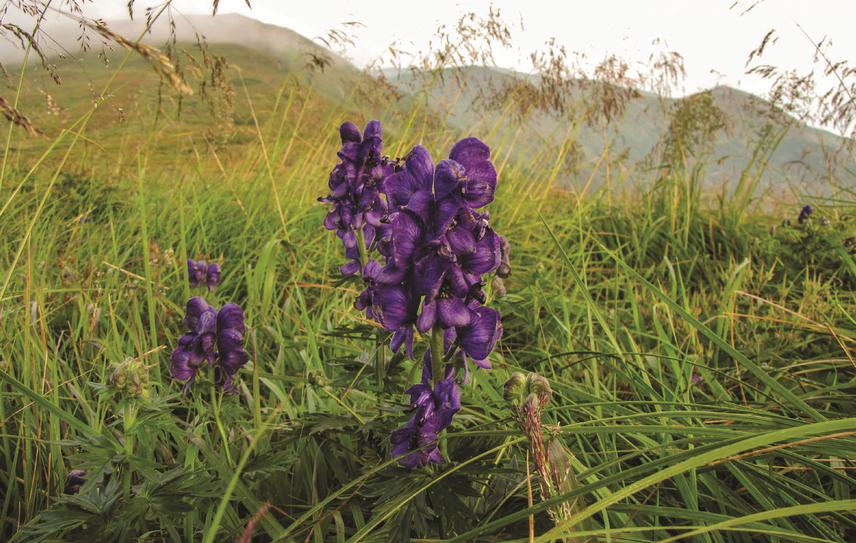Andriy Novikov
Other projects
17 Jan 2017
Monkshoods in Gorgany Mts. (Ukrainian Carpathians): Biogeographical and Conservation Approach
The aim of this project is to inventory and update information on distribution, population size and condition, as well as vegetation relations of Aconitum species in Chornogora Mts. in Ukrainian Carpathians.

Aconites in Chornohora.
The genus Aconitum is a problematic taxonomical group which is characterized by high level of morphological diversity, presence of a number of subspecific taxa, and big amount of interspecific natural hybrids. Taking into consideration these problems, the genus Aconitum during long time was not critically investigated, especially in Ukrainian Carpathians. As a result, only two aggregated taxa (A. anthora and A. lasiocarpum) from this region were included in last edition of Red Book of Ukraine in 2009.
However, precisely in the Carpathian Mountains is located one of the main centers of evolution and diversity of the genus Aconitum in Europe. As my previous investigations showed, in Ukrainian Carpathians 20 Aconitum taxa are represented. From this number 11 taxa are endemics and 7 taxa could be evaluated as threatened. But the main problem is that there are 5 taxa which were preliminary categorized as DD because of lack of information about their distribution, abundance, and condition of populations.
These investigations will allow to estimate the number of Aconitum taxa in Ukrainian Carpathians and clarify their threat categories accordingly to IUCN criteria, as well as to revise current abundance and population size of threatened taxa in part of Ukrainain Carpathians - Chornogora Mts. This will be a good basis for further monitoring of populations states, and will serve as background for inclusion of threatened species into local Red Lists and next edition of the Red Book of Ukraine. From other hand, the cadastre and GPS maps will be important data source for further conservation, taxonomical or chorological investigation of the genus. The vegetation descriptions by Braun-Blanquet method together with analysis of environment conditions allows to clarify relations between occurrence of separated Aconitum taxa or higher taxonomical groups and their habitat. It is very important for effective conservation of threatened species. Planned booklet with detailed information on distribution, GPS-based maps, conditions of populations, descriptions of threats, recommendations about protection, as well as with short bio-morphological descriptions and the key for field identification of monkshoods will improve knowledge level of scientific and non-scientific public about these plants. The same target is also pursued by flyers. Finally, I am planning to organize the open seminar which will gather engaged specialists to discuss contemporary problems of taxonomy, distribution and conservation of the genus Aconitum in different habitats, regions and countries. By the results I am planning to publish seminar proceedings.